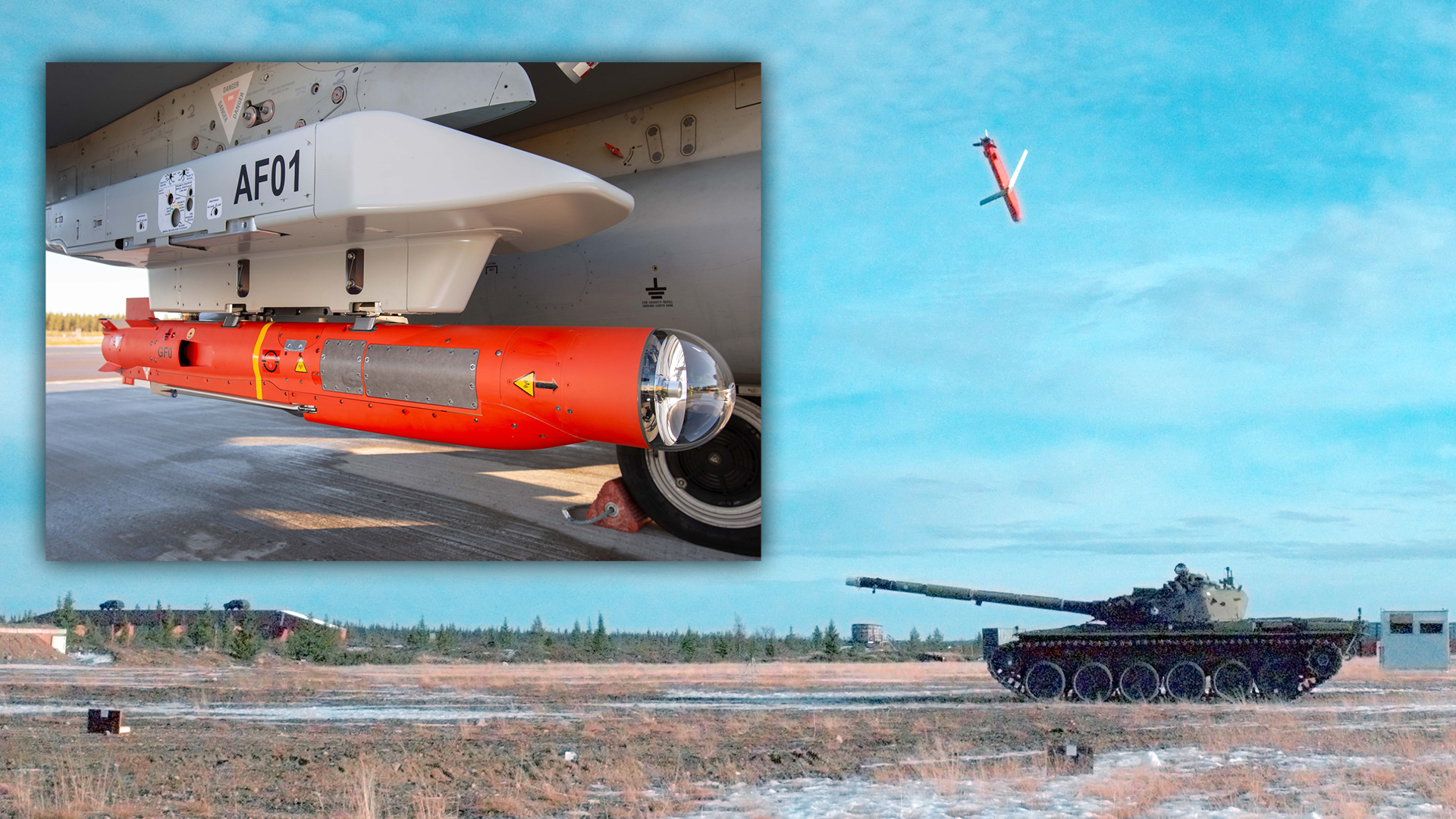The SPEAR 3, a precision-guided standoff munition that the U.K. Ministry of Defense describes as the “cruise missile of the future,” has been test-fired, paving the way for it to arm British F-35B stealth fighters. While offering several key advantages over certain other comparable weapons, the SPEAR 3 program has been mired in delays for some time now, not all of which are the result of problems directly related to the missile. In the meantime, it’s now badly needed, with British F-35Bs having no standoff air-to-ground weapon for the time being.
As we have discussed before, the SPEAR 3 is essentially a miniature cruise missile, powered by a small Pratt & Whitney TJ-150-3 turbojet engine. Combined with pop-out wings, this allows it to hit targets at a reported range of more than 62 miles, flying at a high subsonic speed. Other accounts have attributed it with a range of more than 87 miles.
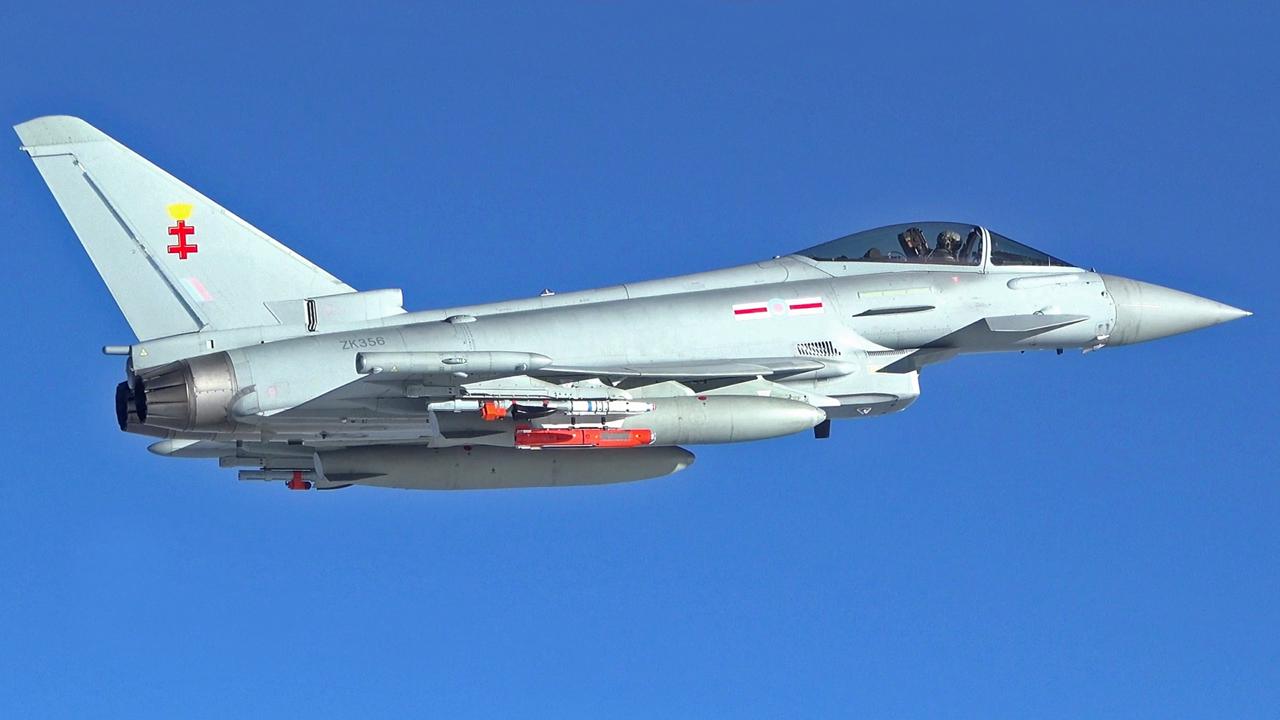
The missile uses a tri-mode seeker that offers radar, infrared, and laser homing. The SPEAR 3 can autonomously identify and prosecute targets, or target coordinates can be sent to the missile via datalink, exploiting the launch platform’s sensors or those of third parties. It can be used against mobile and relocatable targets, as well as ones that are more heavily defended, or otherwise challenging to prosecute. When striking its target via laser seeker — especially useful for moving targets — guidance can be provided by an aircraft overhead or by a suitably equipped team of soldiers on the ground nearby.
Typical targets include ships, tanks, defended structures, and moving vehicles and it’s especially relevant for destruction of enemy air defense (SEAD) missions, which involve attacking hostile air defense systems.
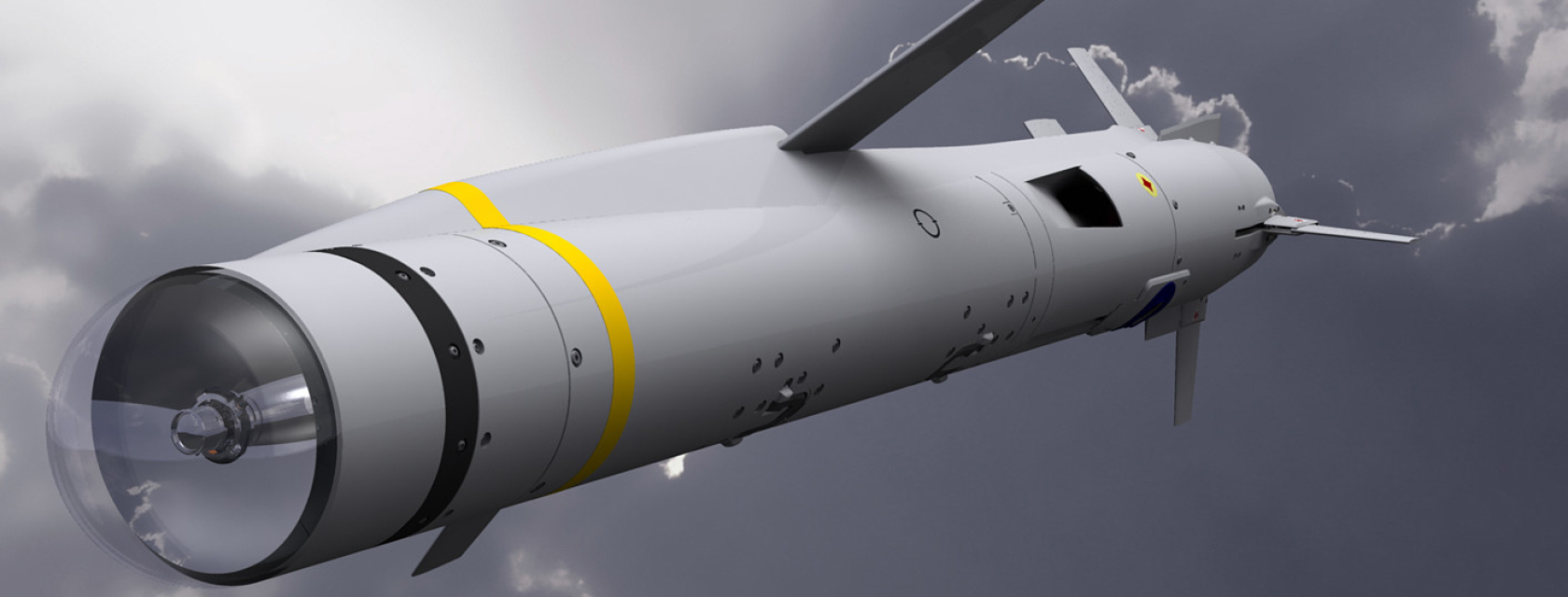
The U.K. Ministry of Defense announced yesterday that the SPEAR 3 munition — developed by the pan-European missile house MBDA — had completed a recent firing campaign, which saw it launched from a Typhoon FGR4 multirole combat aircraft from 41 Test and Evaluation Squadron. The trials were conducted at the Vidsel Test Range in northern Sweden, within the Arctic Circle, reportedly in mid-October.
While this was the first time that the SPEAR 3 was launched against an actual test target, the weapon wasn’t fitted with a warhead. Instead, it carried a telemetry unit, which gathered data on the mock engagement, which involved a “high-altitude and high-speed release” before zeroing in on a decommissioned tank.

The Swedish test was billed as the “first successful guided firing trial of the missile,” although it’s worth noting that, as long ago as 2016, a prototype version of the SPEAR 3 was launched at Aberporth in Wales, also from a Typhoon.
A spokesperson for MBDA explained how the two tests differed, with the Videl campaign being the first guided firing of the SPEAR 3, as part of the formal qualification — a key step toward declaring the weapon operational.

“The trial demonstrated the end-to-end function and performance of the system from initialization, launch, and transition to free flight, the conduct of pre-programmed maneuvers, and engagement of a target,” the spokesperson added. “This guided firing was conducted using a SPEAR three-pack launcher, which uses the same sub-systems (including the pneumatic ejection system) as the four-pack launcher for F-35.”
In contrast, the 2016 trial served as “a technology demonstration conducted during the project’s assessment phase, testing the missile’s airframe, navigation, and propulsion systems to increase technical maturity and de-risk the program ahead of the launch of the weapon development phase. The missile was a prototype standard and there was no target selection and engagement functionality in the 2016 trial.”
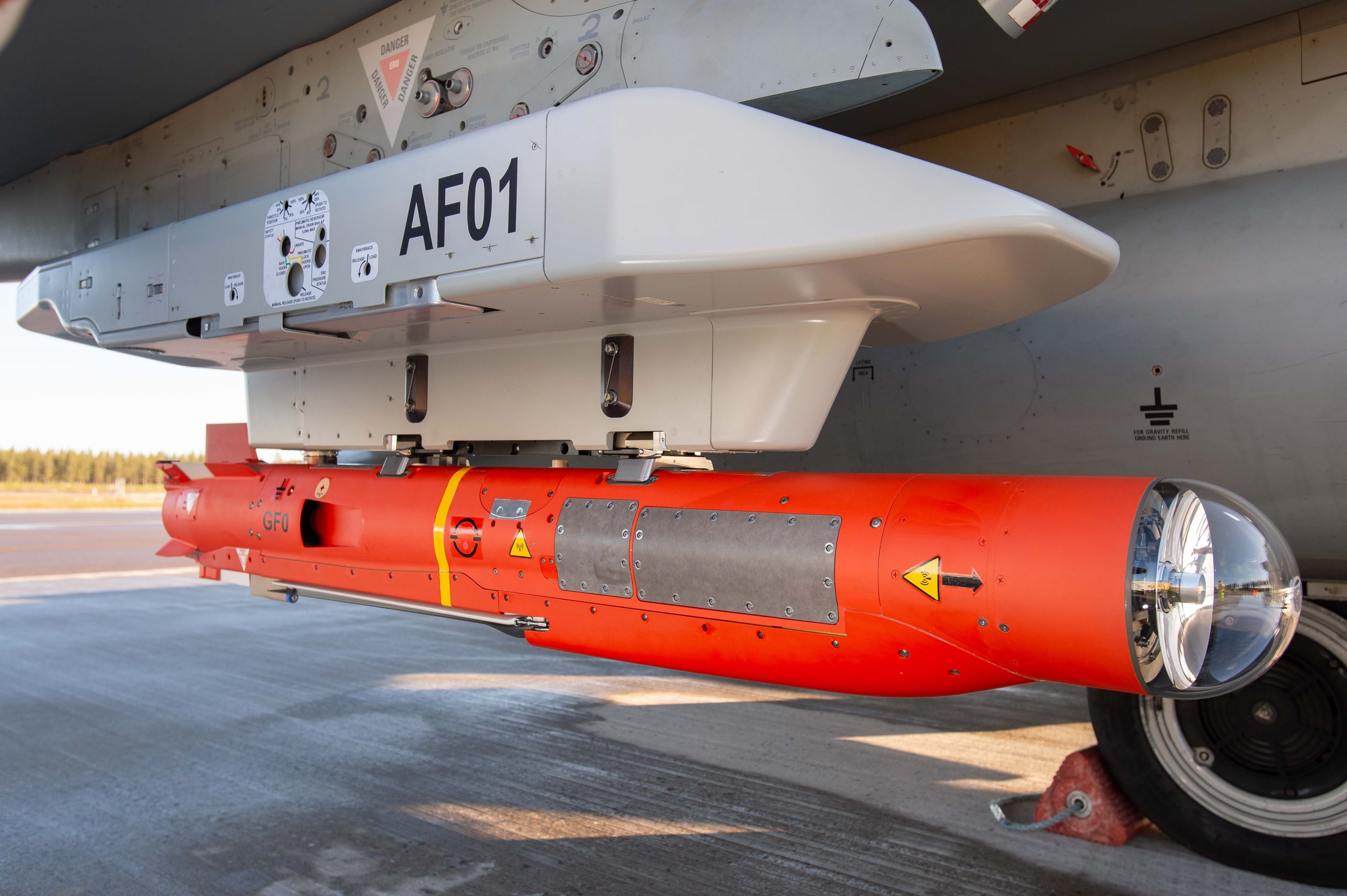
In addition, for the 2016 trial, the missile was launched directly from the aircraft’s pylon rather than a dedicated launcher, and the prototype missile was suitably modified to use the existing pylon interface.
Returning to the Vidsel trial, U.K. Minister for the Armed Forces, Luke Pollard, issued the following statement:
“The successful trial of the pioneering SPEAR missile marks a significant leap forward in UK Armed Forces’ capabilities, ensuring our Royal Navy and Royal Air Force personnel are equipped with cutting-edge technology to protect our nation.”

Matthew Brown, SPEAR Team Leader at the Defense Equipment and Support (DE&S) branch, which handles procurement for the U.K. Ministry of Defense, added: “This trial was a key step on the way to delivering SPEAR to the UK front line, where it will provide a new capability to defeat the most complex air defense systems, enabling pilots to fly and fight wherever they’re needed in defense of the U.K. and its allies.”
As for the next phases of testing, the same MBDA spokesperson confirmed to TWZ that the telemetry and flight termination sub-system fitted in place of a warhead for the Vidsel trial is sufficient to gather all data needed to support system development and model validation, as part of the guided firing program. Meanwhile, the multi-mode warhead, arming, and fuzing systems have already successfully been trialed at the system and sub-system levels.

Next up, there will be full test firings using a live warhead, to be conducted by the U.K. Royal Air Force as part of the end-user’s service evaluation trials, although no date for this was given.
In the past, we have compared the British-made weapon against the U.S. GBU-53/B Small Diameter Bomb II, better known as StormBreaker, with the major difference being the turbojet engine in the SPEAR 3, which means it has more range and can reach its targets faster than the unpowered glide bomb. Its speed also lends itself to survivability.
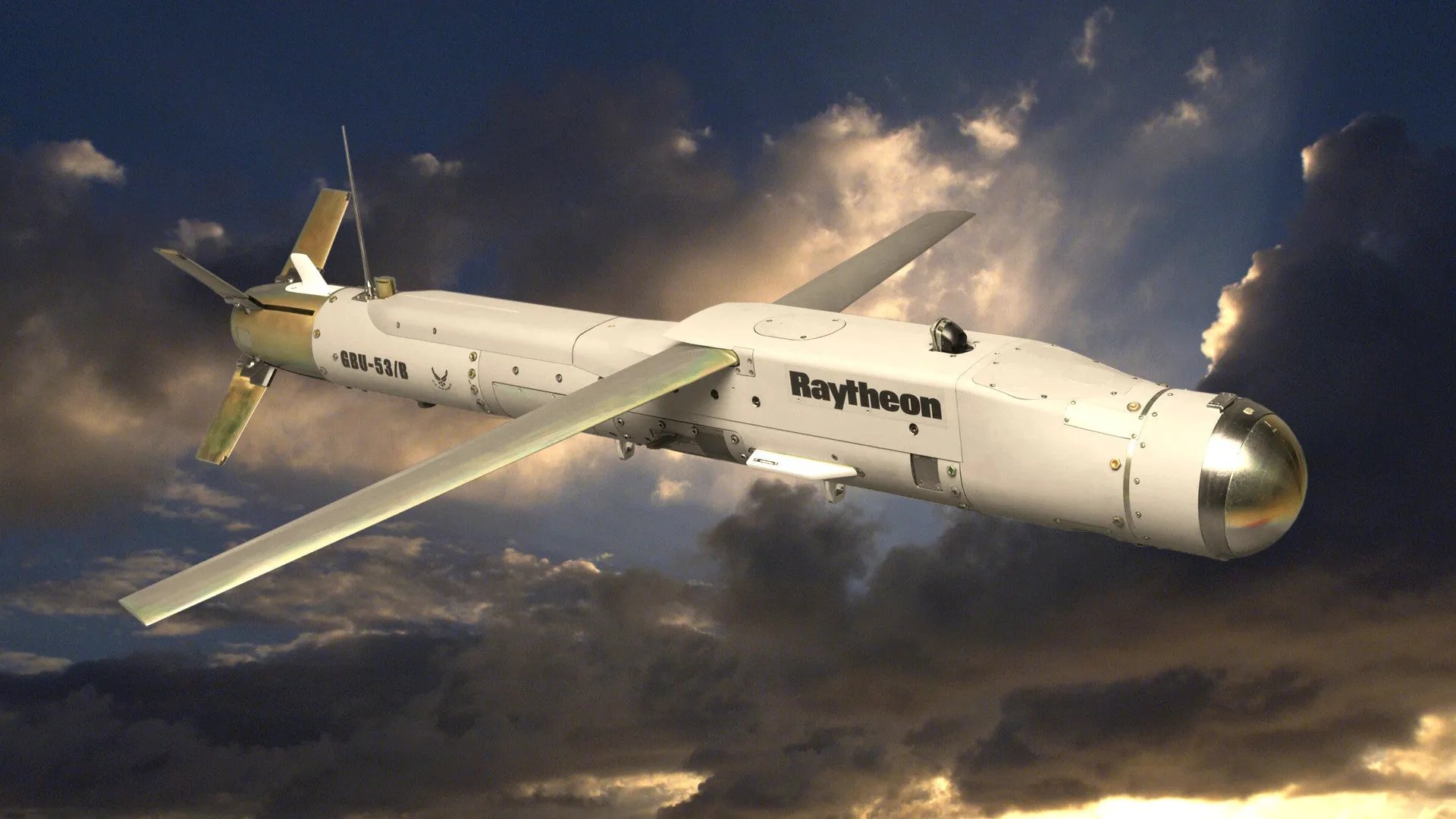
While the Typhoon already carries the Brimstone precision-guided munition from which the SPEAR 3 was derived, the new missile will primarily arm the U.K.’s fleet of F-35B short takeoff and vertical landing (STOVL) stealth fighters. These also deploy aboard the U.K. Royal Navy’s two Queen Elizabeth class aircraft carriers.
Each F-35B jet will be able to carry up to eight SPEAR 3 missiles at a time, as well as a pair of Meteor or AIM-120 AMRAAM beyond-visual-range air-to-air missiles (BVRAAMs) — all of them accommodated internally, preserving the jet’s low-observable characteristics. At one time, consideration was also being given to adding capacity for underwing launchers on the F-35B, for a maximum of 16 SPEAR 3 missiles.

While SPEAR stands for Selective Precision Effects At Range, the ‘3’ in the designation of the new missile refers to its place within a portfolio of different air-to-ground weapons that are being developed for the U.K. Armed Forces.
Within this structure, SPEAR 1 refers to the Paveway IV precision-guided munition, while SPEAR 2 is the Brimstone, SPEAR 4 is a midlife upgrade for the Storm Shadow cruise missile, and SPEAR 5 is the Future Cruise/Anti-Ship Weapon, which is being pursued as a joint project by the United Kingdom and France.
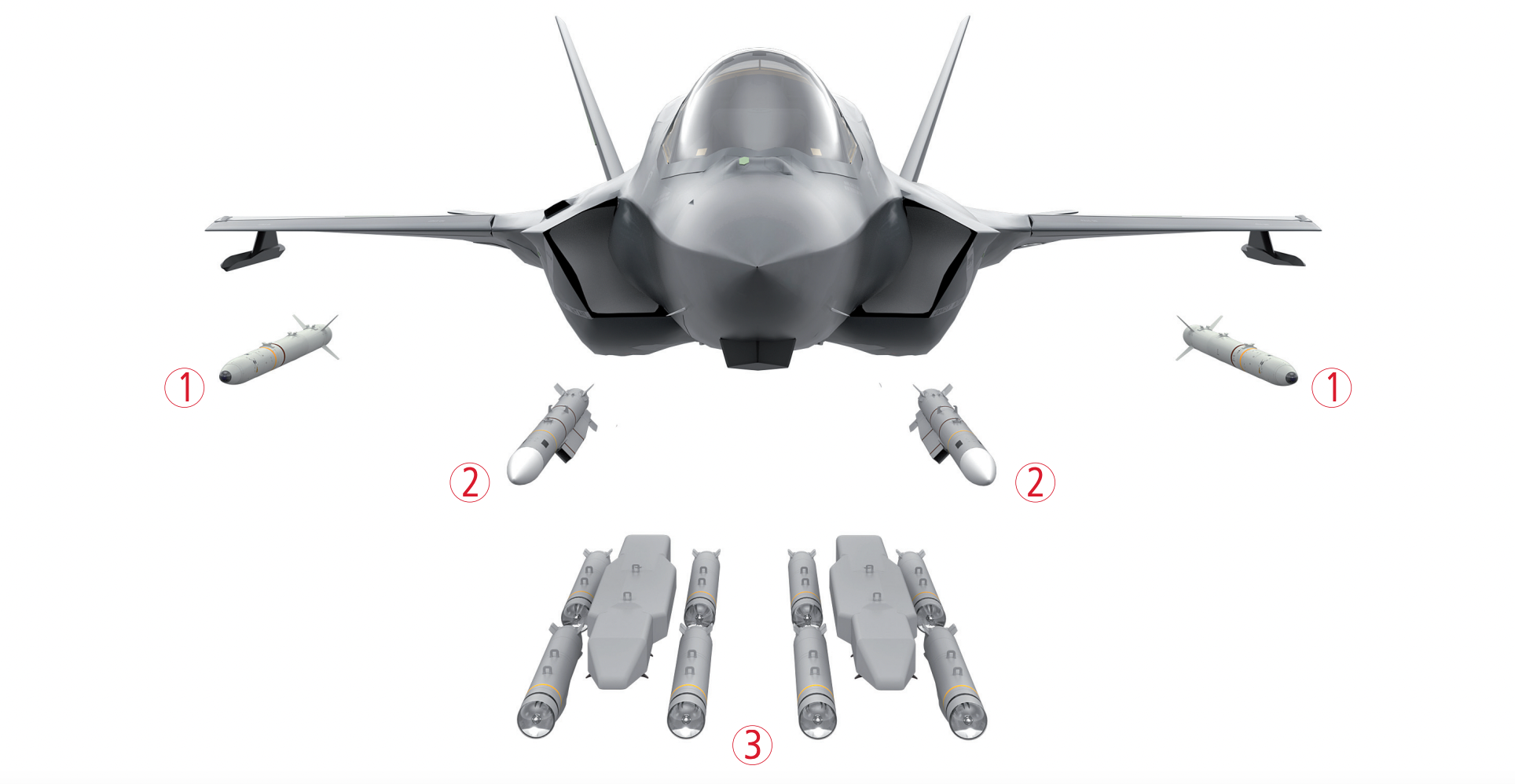
In total, the United Kingdom is investing around $8.2 billion in missile programs via the manufacturer MBDA, which is responsible for the SPEAR 3 as well as Brimstone and Storm Shadow, the Sea Venom anti-ship missile, and the CAMM and Sea Viper naval air defense missiles.
While the investment is considerable, it should be recalled that the development of the SPEAR 3 has not been free of problems.
In 2021, MBDA and BAE Systems announced they had secured funding from the British and Italian governments to complete the integration of the SPEAR 3 on both the F-35B and the conventional takeoff and landing F-35A. While the United Kingdom has only acquired the F-35B, Italy operates both versions.
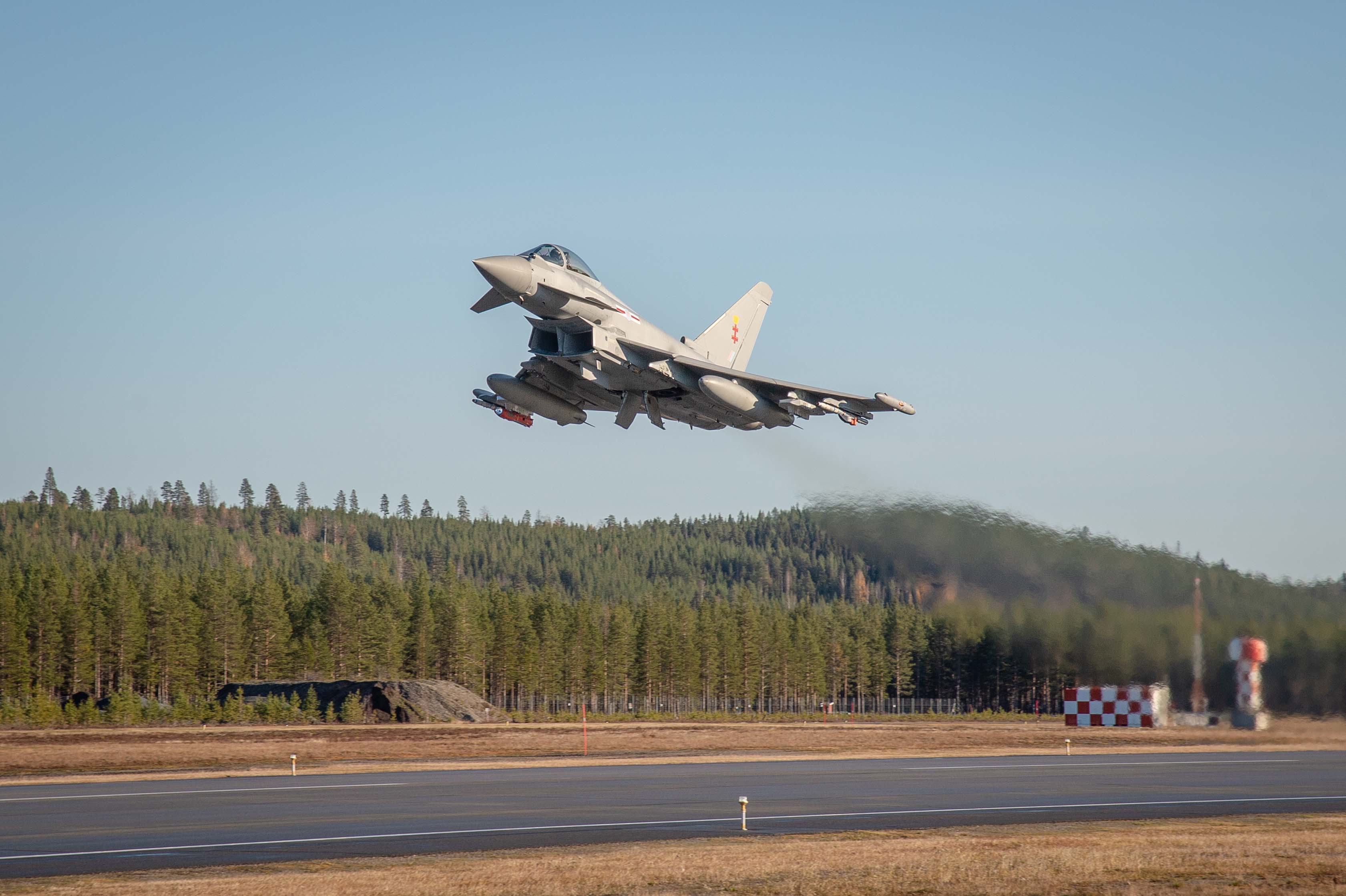
At one point, integration of the SPEAR 3 and Meteor on the F-35B was expected by the “middle of this decade,” while a date of 2027 at the earliest was given in a government report dated February 2022.
Earlier this year, the U.K. government said that integration of the SPEAR 3 and Meteor on the F-35B would be completed by the “end of the decade.” This leaves the British F-35B without a standoff air-to-ground weapon in the meantime, with only the unpowered Paveway IV available.
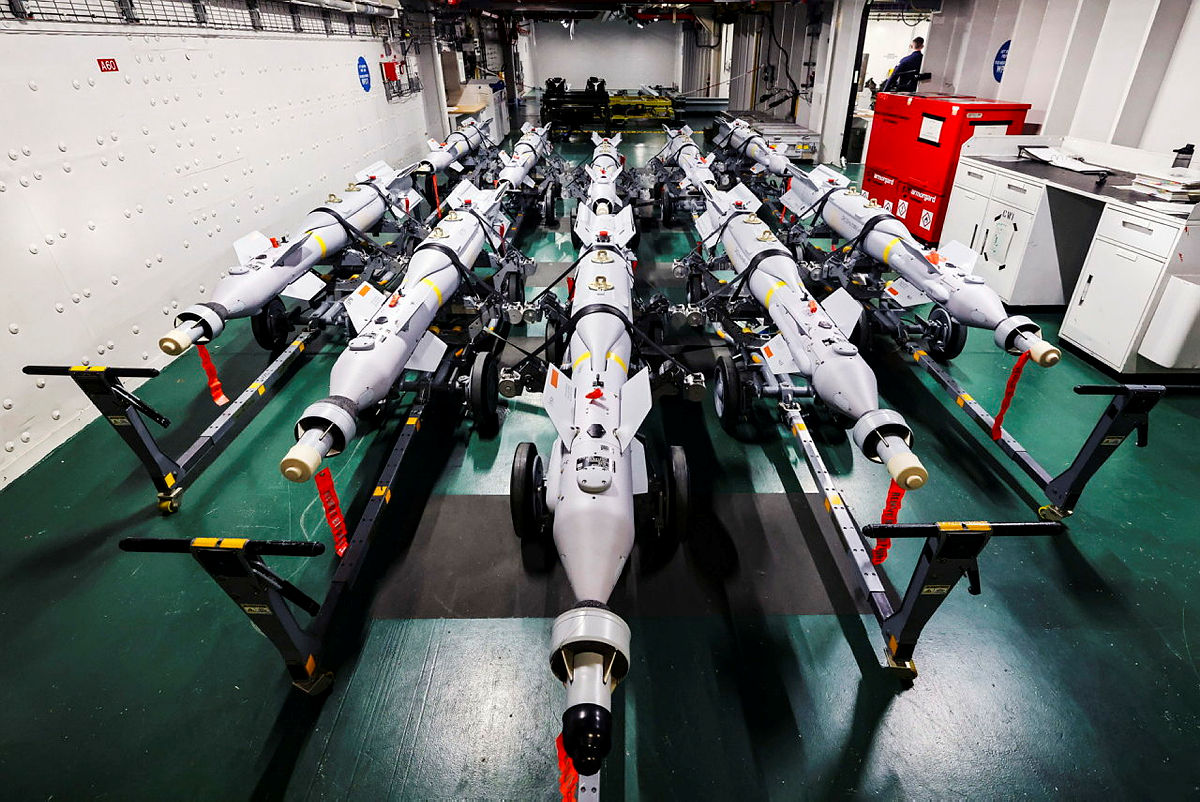
The SPEAR 3 program has also been dogged by delays in integrating new weapons on the F-35B. Above all, compatibility with the SPEAR 3 relies upon the F-35 having the Block 4 upgrade, which promises to bring other major advances to the aircraft, including a new multifunction active electronically scanned array (AESA) radar designated as AN/APG-85 and advanced electronic warfare capabilities.
Block 4 relies upon a new suite of hardware and software for the F-35, known as Technology Refresh-3 (TR-3), something that has been described as the stealth fighter’s new ‘computer backbone,’ but which has also had a very protracted development. Delays with TR-3 left F-35s being parked and not delivered after they were built, a situation that continued for around a year before deliveries restarted. Those previous jets left waiting at the manufacturing facility also now need to be retrofitted with TR-3.
As far as we know, the United Kingdom also plans to bring earlier F-35Bs up to Block 4 standard, to ensure commonality, although questions remain about just how feasible this is.
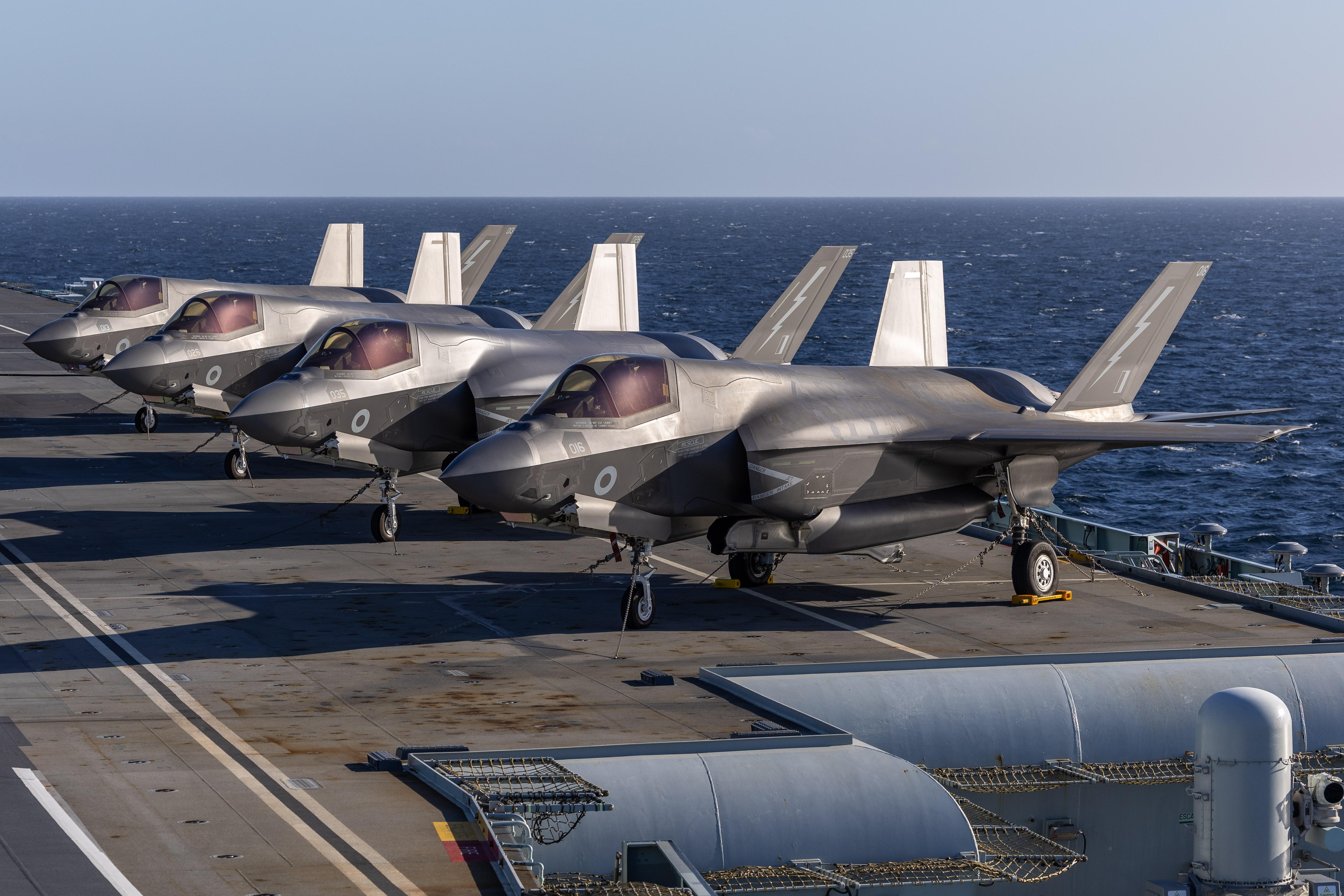
AS1 Amber Mayall RAF
Against this backdrop, there are also lingering questions about the number of F-35Bs the United Kingdom will buy. While the U.K. Ministry of Defense has long said it’s committed to buying 138 F-35Bs, repeated budgetary concerns mean that this figure is now widely viewed as being unrealistic.
As it stands, the United Kingdom has ordered 48 F-35Bs, known as Tranche 1, and has confirmed plans to place a Tranche 2 order for 27 F-35Bs, although this is yet to be signed off.
Whatever the future F-35B fleet looks like, the SPEAR 3 looks set to provide a very valuable capability. Further sales appear likely, with Italy committed to the program, and compatibility with the Typhoon and F-35A/B opens up a potentially wide range of additional export customers.
As well as the SPEAR 3, MBDA is also developing the SPEAR-EW, with the explosive payload replaced by an electronic warfare jammer and decoy functions. Ultimately, the aim is for the SPEAR 3 and SPEAR-EW to work together to overwhelm enemy air defenses and protect friendly aircraft and even other missiles. The possibility of harnessing the capabilities of these effectors in a fully networked fashion is significant and TWZ has previously looked more deeply at the implications of these kinds of swarms of mini-cruise missiles.
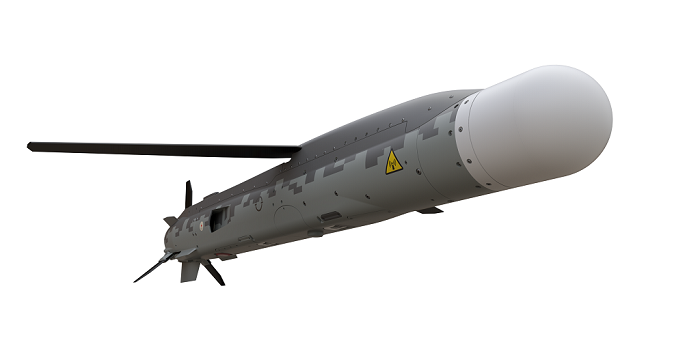
A spokesperson for MBDA confirmed to TWZ that work on the SPEAR-EW is currently ongoing under a rapid design phase contract from the U.K. Ministry of Defense.
Although it has been subject to delays, some of which are attributable to problems in the F-35 program, the SPEAR 3 is now finally making tangible progress on the path toward operational service with the United Kingdom. Once it arrives, it should provide a powerful new capability — especially when combined with the stealthy F-35.
Contact the author: thomas@thewarzone.com
